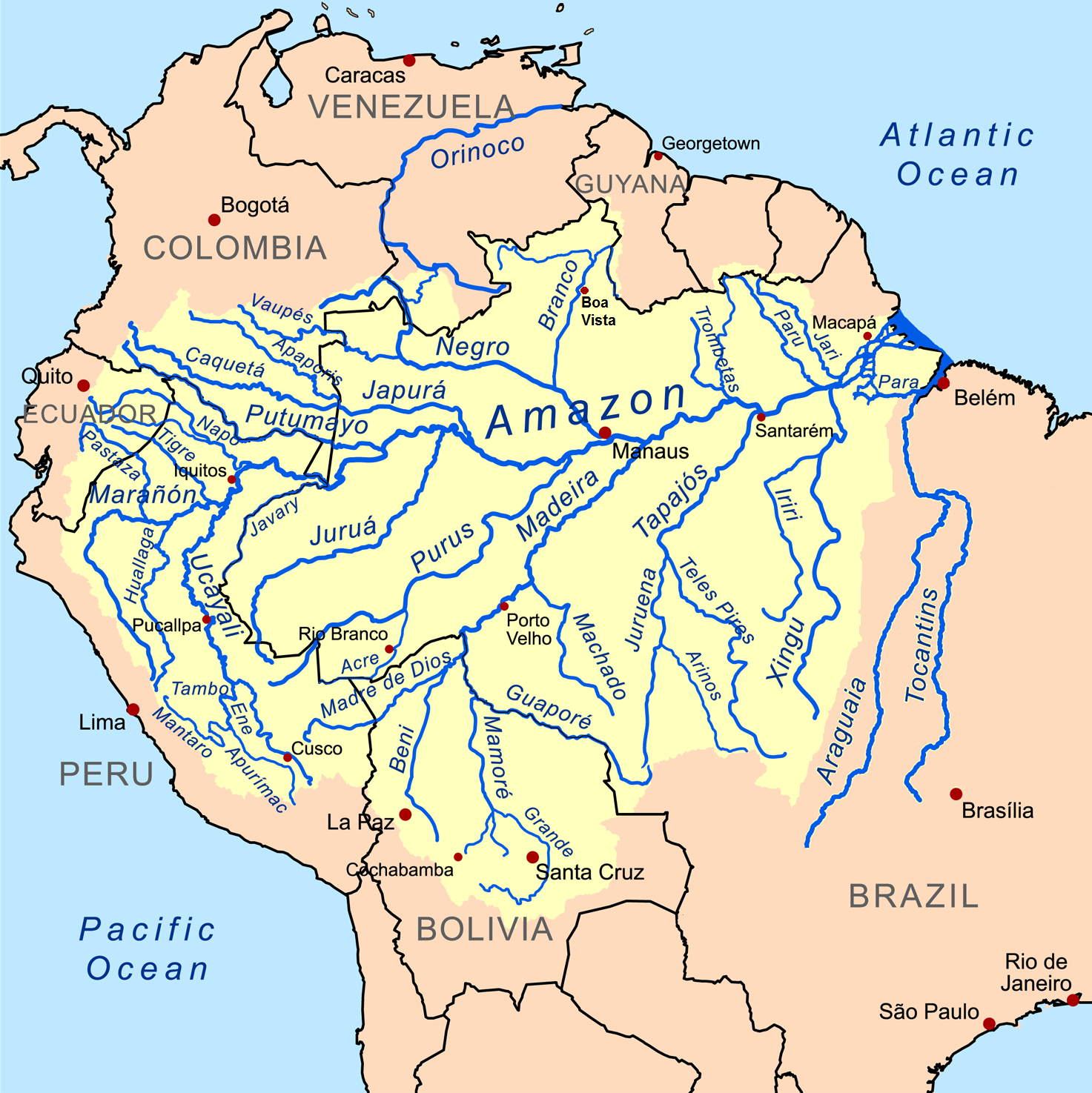
Amazon basin
The Amazon basin is the part of South America drained by the Amazon River and its tributaries. The Amazon drainage basin covers an area of about 7,000,000 km2 (2,700,000 sq mi),[1] or about 35.5 percent of the South American continent. It is located in the countries of Bolivia, Brazil, Colombia, Ecuador, Guyana, Peru, Suriname, and Venezuela, as well as the territory of French Guiana.[2][3]
This article is about the drainage basin. For the geologic feature, see Amazon Basin (sedimentary basin).Most of the basin is covered by the Amazon rainforest, also known as Amazonia. With a 5.5 million km2 (2.1 million sq mi) area of dense tropical forest, it is the largest rainforest in the world.
Climate[edit]
The Amazon River basin has a low-water season (known popularly as summer), and a wet season (known popularly as winter) during which, the rivers flood the adjacent, low-lying forests. The climate of the basin is generally hot and humid. In some areas, however, the summer months (June–September) can bring cold snaps, fueled by Antarctic winds traveling along the adjacent mountain range. The average annual temperature is around 25-degree and 28 degree Celsius with little to no distinction between summer and winter season.
Languages[edit]
The most widely spoken languages in the Amazon are Portuguese and Spanish. There are hundreds of native languages still spoken in the Amazon, most of which are critically endangered.
Indigenous peoples[edit]
Many tribal groups live in the Amazon Basin, often in relative isolation. It is estimated 400 or more tribal groups have lived in the Amazon Basin for hundreds of years with their own culture, language, and lifestyle. Today total population of Amazon basin is 1.5 million distributed. There are an estimated 100 uncontacted tribal groups. The largest organization fighting for the indigenous peoples in this area is COICA. It is a supra organization encompassing all indigenous rights organizations working in the Amazon basin area, and covers the people living in several countries.
River commerce[edit]
The river is the principal path of transportation for people and produce in the regions, with transport ranging from balsa rafts and dugout canoes to hand built wooden river craft and modern steel hulled craft.